On our short but steep hike to our spike elk camp in the Rocky Mountains of central Colorado, Aron Snyder stops and looks at the ground.
“A pretty decent-sized herd must have come through here in the last 12 to 24 hours,” he says.
We examine dozens of tracks along with a patch of wet dirt that’s rank with the musky scent of bull elk urine. Three hundred yards later, we’re getting set up at Aron’s camping spot. Once camp is set, and our gear is organized, we take a minute to relax and wait for the midday mountain winds to settle before stepping off to hunt the evening.
“You hear that?” I ask as I cup my hand around my ear.
“What?” Aron asks.
“I think I heard a bugle, but I can’t tell if it’s a real bull or another hunter,” I say.
A few minutes pass, and we hear another bugle, followed by another and another.
“Those are real elk and more than one bull,” I say, excited.
Aron grabs his bow.
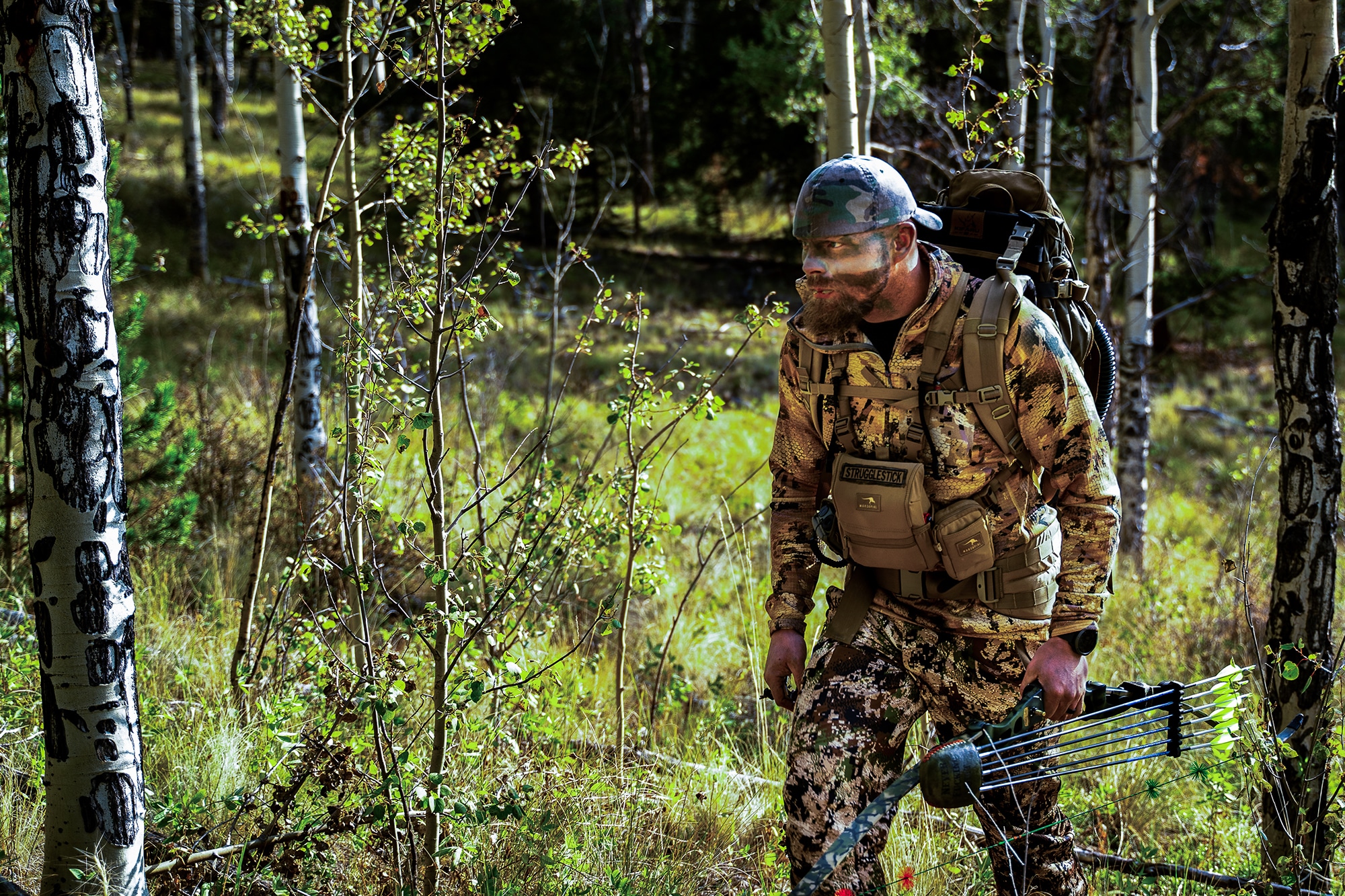
In about a decade, he has gone from an active member of internet hunting forums and occasional outdoor writer to one of the most trusted men on everything bowhunting. He’s an owner and partner in a hunting-first pack company, Kifaru International, and helps guys like Joe Rogan get deadly in the mountains.
Snyder achieved all his success his own way, never smiling, always spitting Cope, and always being aggressively himself. He does not compromise, which is part of the reason he’s a world-class archer and bowhunter.
On this September afternoon, he’s ready to go kill a bull. I get my bugle tube and let one rip; an immediate response from a bull below confirms that we indeed cut the fresh tracks of a herd on the way to camp. A minute later, we hear another bugle, this time closer than before.
Aron lays out the plan, and then I move straight north about 50 yards behind camp to continue calling while Aron drops off the west side of our perch on the mountain and hooks around to the south toward the elk.
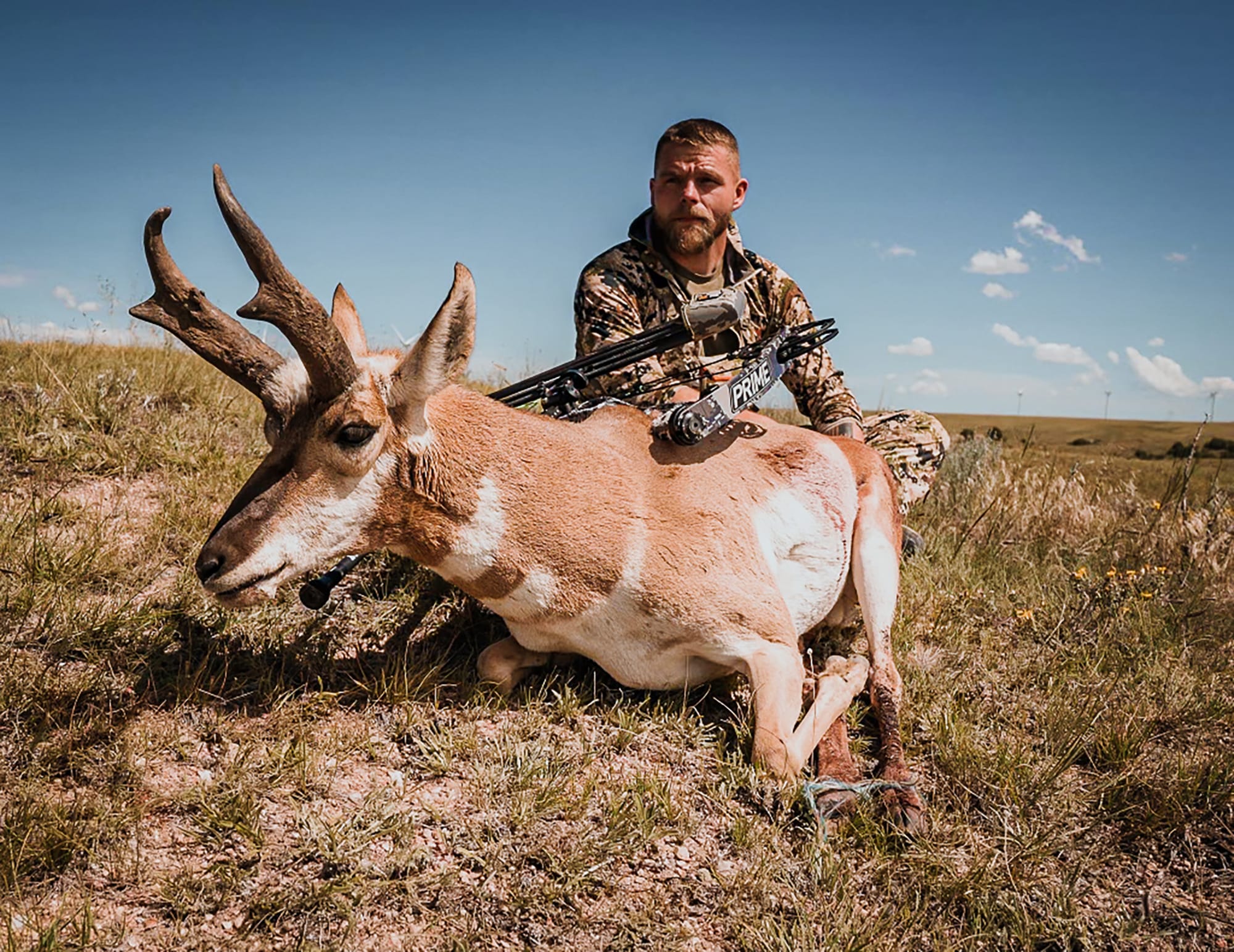
These bulls are hot. Then, they shut off. After about five minutes, they go silent, and Aron and I meet back up at our tents.
“They were coming straight for camp, had good wind, then I felt a gust on the back of my neck, and they shut up,” Aron says.
“We’ll get ’em,” I say as we ruck up and head south after them.
We creep down the mountain, all the while paying close attention to the wind as the rocky ground and conifer forest give way to a grassy aspen grove. Not far into the aspens, we hear cow elk mewing and are stopped in our tracks by a bull calling back to her. This bugle is different from the others; it’s deep and guttural, with a distinct growl on the end. This is the herd bull.
Aron Snyder: Starting From Zero

“For people [who] don’t follow hunting, let me explain you,” Rogan said on Episode #1499 of The Joe Rogan Experience when he introduced Snyder. “Aron got too good at shooting with a compound bow, which is probably one of the hardest ways to hunt. So he decided to shoot with a fuckin’ medieval bow.”
Some people online have taken to calling Snyder “Trad Jesus.” He’s come a long way from a guy crashing on a backpacking sleeping pad in a one-bedroom apartment while installing shower doors just to make enough money to go hunting.
He grew up in the small logging community of Detroit, Oregon, located in the Central Cascade Mountains just west of the Pacific Crest Trail. His earliest hunting days were spent with his dad and dad’s friends using the popular technique of the time: road hunting.
At 14, Snyder found himself working summers for the Forest Service on a trail crew. He carried five days’ worth of gear while clearing about 10 miles of wilderness trails each day with an ax. This, he says, is where the fire for backpack hunting was lit within him.
At 17, Snyder came to a crossroads. His high school shop teacher, a Vietnam-era Army Ranger, told him something like, “You’re not meant for college, kid, you should join the Army.” So Snyder enlisted as a 12B combat engineer.
“Aron’s passion for hunting goes beyond score. He’s in it for the adventure and the experience. And he just likes to send arrows.”
— Frank Peralta, Kifaru International
Combat engineers do everything from building bridges to clearing minefields. They’re best known for their sappers: demolitions experts infamous for their liberal use of explosives. During the Global War on Terror, they were often used as route clearance. Sappers would drive routes ahead of units by looking for and detonating improvised explosive devices.
“As a knuckleheaded kid with no direction, the Army got me set on a good path. I’m not sure I would be where I am today without getting my start with Uncle Sam,” Snyder said.
The Army sharpened many of his fieldcraft and survival skills, but perhaps the most significant takeaways from his years of service were expert-level map reading and land navigation skills, the ability to live out of a pack for a long time, and comfort in discomfort. That’s pretty much an ideal prerequisite list for mountain hunting.
Directly after the Army, Snyder moved on to commercial glass and iron work. It was during this period, he said, that he noticed a lot of sponsored hunters talking about products they had little experience with because they were getting paid to do so. Hunting media has long been a pay-to-play game, and as an end consumer, this pissed Snyder off.
He started buying gear and testing it. He posted his results on internet forums, like Rokslide. At one point, when he was living in that one-bedroom apartment sleeping on camping gear, he said he didn’t buy furniture because he was spending his money on gear to test and saving cash for future hunts.
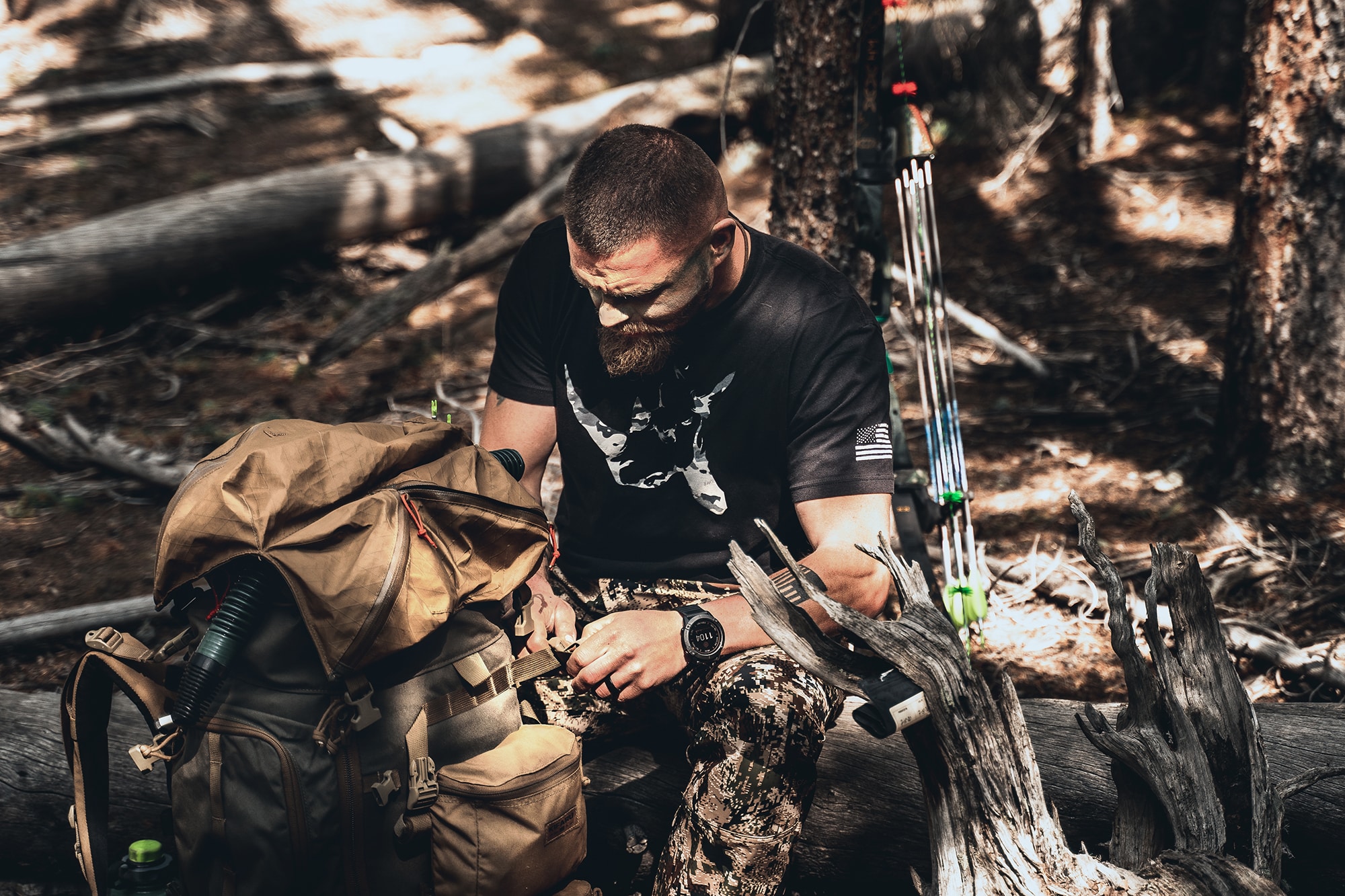
“Every time I hear ‘Must be nice,’ I think back to the early days. I made a lot of sacrifices — monetary and personal — to live the life I wanted and to stay true to my beliefs,” he said.
Eventually, hunting publications began to take notice. At the time, he was spending more than 100 days a year afield. His unbiased and public opinions on gear, plus the fact that he was actually killing animals with a bow, allowed him to build up a significant following. He started writing for lesser-known publications (none of them still around today) and eventually caught the eye of the publisher of Outdoor Life magazine in 2011. At OL, he co-hosted one of the magazine’s first internet video series, Live Hunt.
In 2012, Snyder met with Patrick Smith for an interview and to test some Kifaru International packs. Smith was a legend in the industry who single-handedly built Mountainsmith before selling it in the mid-1990s. With Kifaru, Smith wanted to build packs and a company for the die-hard world of serious mountain hunting.
“Aron hit the ground here [at Kifaru] running. His inclination was to design and manage and market from the field, and that fit my wishes and requirements perfectly,” Smith said.
“When you saw THE ELK REAPER on Bowsite.com, you knew you were getting solid information on gear. Unlike a lot of people at that time, you could take Aron’s opinion of gear as gospel.”
— Drew Kohlhofer, owner Selway Archery Products
Snyder fell in love with Smith’s early Kifaru frame design and helped design a bag for the company. Smith liked Snyder’s critical eye when it came to gear, coupled with the fact that he actually knew what he was doing in the woods. Smith offered him a subcontracting position, and soon, Snyder was working for Kifaru.
Prior to the 2020 season, Snyder set the goal of killing a 300-inch bull, one that was bigger than his first with a recurve in 2016. His knowledge of this particular game management unit in Colorado was extensive. He had set up multiple trail cameras during the summer over water holes that had turned to wallows by the time I joined him in mid-September. His camera survey of the area confirmed there were a couple of bulls in the 300 range. For everyone who followed Snyder on social media, the decision to hold out for antler size was a surprise.
“Aron’s passion for hunting goes beyond score,” said Frank Peralta, Snyder’s long-time hunting partner and former right-hand man at Kifaru. “He’s in it for the adventure and the experience. And he just likes to send arrows.”
The Satellite Bull
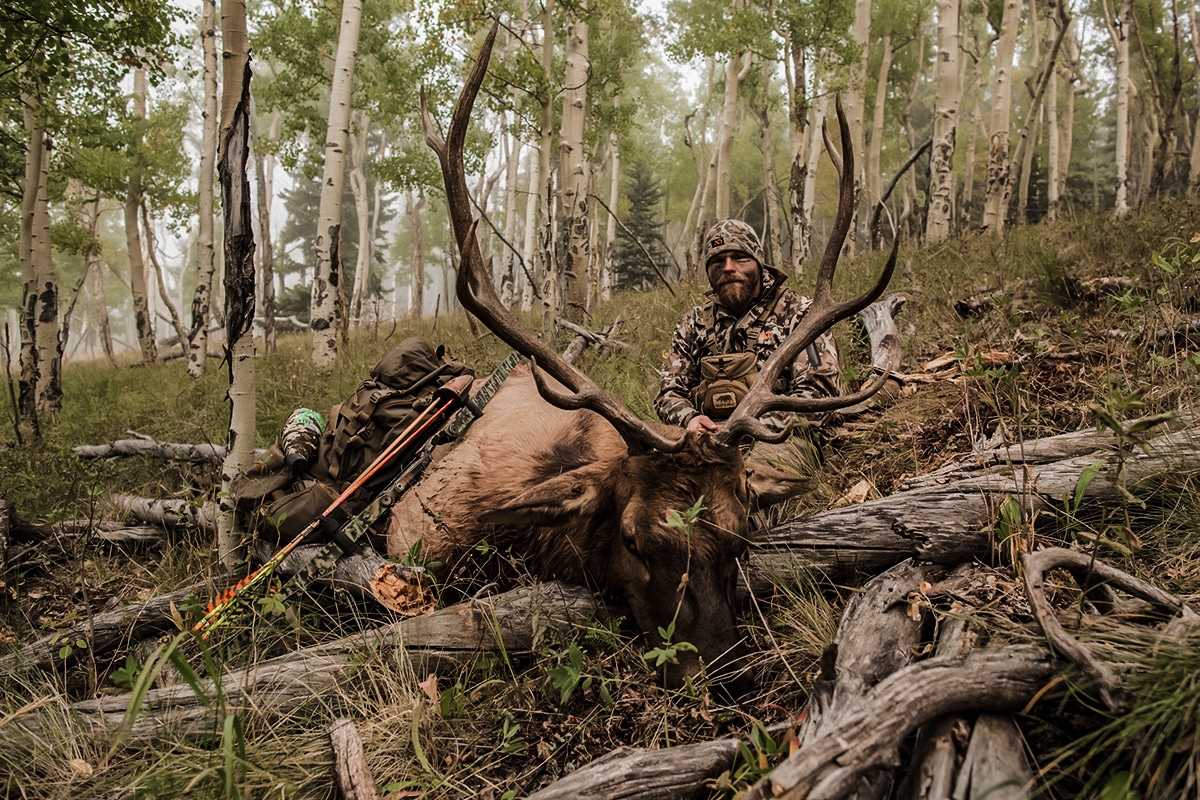
For Aron, each day on the mountain starts the same. Up at 4:45 a.m., fire the stove from the sleeping bag, boil water, drink coffee to take the chill off, then climb into the cold, dark morning.
The herd bull we got on that first afternoon vanished. The squirrel wind had gotten us again. So the morning after, we hike by headlamp to a spot Aron calls “the honey hole,” and we’re there by 5:30 a.m. By sun up, we’re nearly at an aspen bowl on the mountainside that in normal years has water running through it, but a hot dry summer has made water scarce. About 300 yards away from the honey hole, we stop.
“Bugle,” Aron says.
I let out a locator bugle, and we hear multiple bulls fire off. Elk like to identify other elk by a combo of three senses: smell, sight, and sound. If they hear another elk, they want to smell or see him next to confirm it’s not an imposter like us. Having a caller set up behind the shooter can help get an elk into bow range.
“Yep,” Aron says as the bulls sound off. “They’re in the honey hole.”
After checking the wind, we move down the mountain to reach the same general elevation as the elk. Once we reach the edge of the aspen bowl, Aron moves about 75 yards forward, and I start calling. More than one bull bugles back.

After 30 minutes of calling back and forth using a combination of bull and cow calls, we hear the elk start to move off. I hike to Aron.
“I think we may be into two different herds,” he says. “One is probably going to continue north on the ridge to bed in this spot.”
We move in that direction, get set up, and start calling. Aron’s suspicion is confirmed. The bull we heard the evening before with the distinct growl has moved at least 400 yards up the mountain to the west. The additional bulls we heard are not far from us, moving in the general north direction Snyder outlined on the map.
A bull lets out a timid half-bugle as if to try to let us know he’s coming to us without letting the rest of the herd know. Aron dodges left into the tree line, and I move right down the hill and tuck into a root wad on a generally open hillside.
Once the bull reaches the edge of the tree line, he stops and looks for the cow he came to inspect. After 10 minutes of hearing elk but not seeing them, the bull lets out a bark. I can’t see Aron, and I can’t see the bull. I try to keep my silhouette as low and small as possible.
“Social media is like being married to a super-hot wife who cheats on you all the time. It will fuck you over if you let it. Social media, for all that it is, does a lot of good, but it can also lead you astray. Just because someone has 10,000 followers on IG doesn’t mean they know what they’re doing in the backcountry.”
— Aron Snyder
Elk have two different barks. The first is an alarm bark meaning there’s danger and it’s time to go. The second is a “show yourself” bark. This was a “show yourself” bark. If he didn’t see an elk soon, he’d leave.
I belly crawl backwards down the mountainside, being careful to keep the root wad between the bull and my movement. I continue down the hill while cow calling until I am about 200 yards away from the root wad. My hope is that when the bull hears cows move away, he will throw caution to the wind, break his cover, come for me, and give Aron a shot.
It doesn’t work.
“You couldn’t see that bull, could you?” Aron asks when we meet up half an hour later.
“Fuck no, I couldn’t, and I almost shit my pants when he barked!” I say.
“I had him dead to rights at 15 yards for five minutes, but he was a five on one side and a fucked up three on the other. I almost shot him and would have definitely killed him if his other side wasn’t fucked up.”
“Well, I’m glad you didn’t; I heard the growler go west up the mountain.”
Fear the Reaper
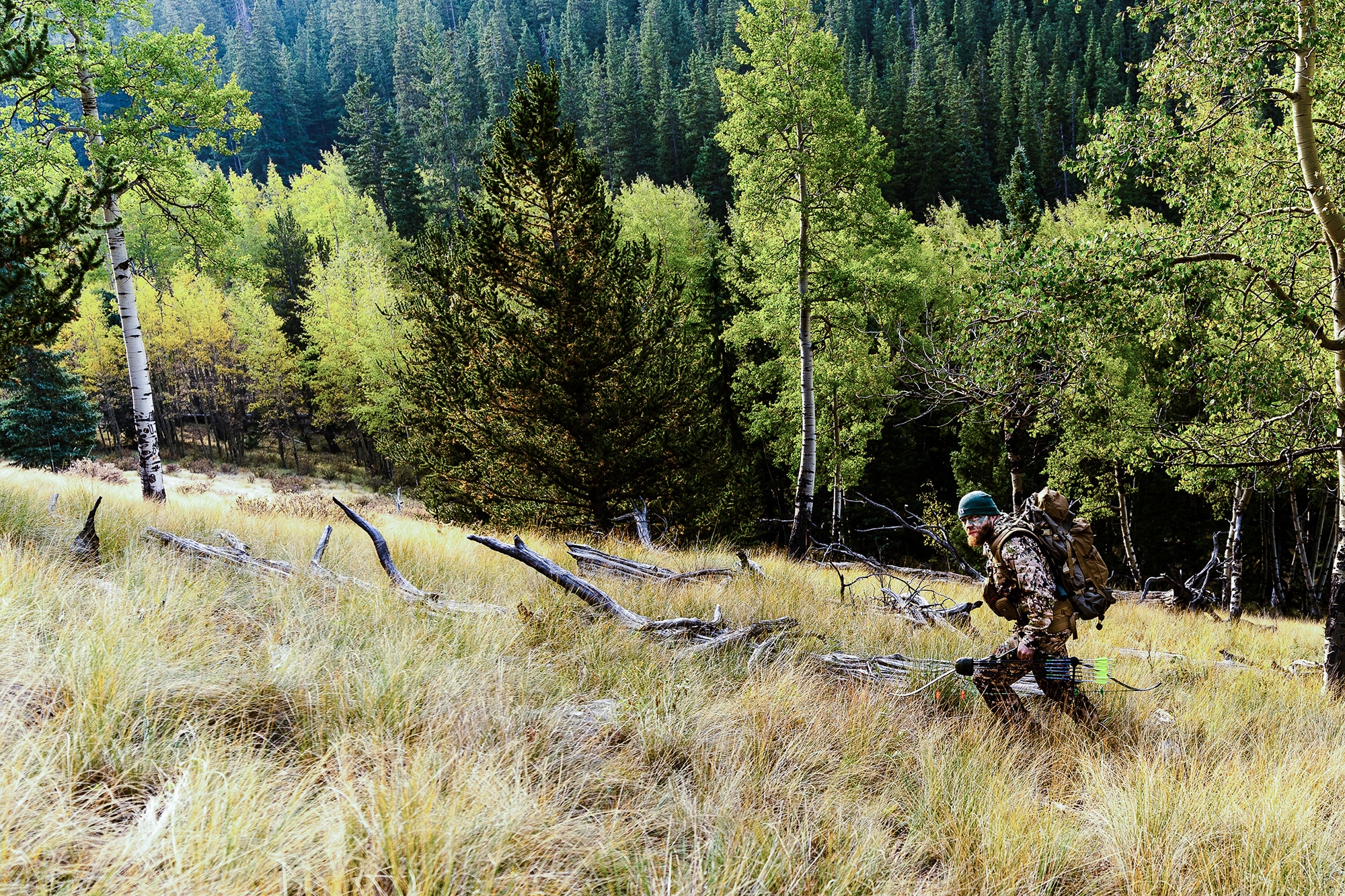
“When you saw THE ELK REAPER on Bowsite.com, you knew you were getting solid information on gear,” Drew Kohlhofer, owner of Selway Archery Products, told me. “Unlike a lot of people at that time, you could take Aron’s opinion of gear as gospel.”
Snyder’s rise in the hunting industry did not come easy. He worked long and late hours in construction, lived on next-to-nothing, and was divorced twice. He knew he wanted to stay unbiased as far as gear reviews, but he also wanted to continue staying afield as many days as possible. He was doing just that, but the financial burden was adding up.
In 2014, Smith, the owner and founder of Kifaru, promoted Snyder to general manager and president of the company. Smith encouraged him to be in the wilderness as much as physically possible. He wanted Snyder to speak the truth on gear, backpack hunting, and overall wilderness living and fieldcraft as much as possible. In those days before “influencers,” Smith saw great value in having a guy like Snyder on staff, just doing his thing.
“Aron isn’t just a good hunter, he’s also a good hunting partner. He cares about your success as much as his own, and if there’s something he can do to make the hunt or trip better, that’s what he does.”
— Cody Covey, friend
“I always imagined hardcore men taking my company [Kifaru] on into the future, and I think I’m looking at them right now,” Smith exclaimed on an episode of Kifarucast, speaking about Snyder and his partners.
Snyder’s rep grew in the forums and with the small magazine work he was doing on the side, but forums and print lost popularity fast through the mid-2010s, and social media took hold. Snyder reluctantly started posting his findings on Facebook and Instagram. His fans followed him.
“[Social media] is like being married to a super-hot wife [who] cheats on you all the time. It will fuck you over if you let it. Social media, for all that it is, does a lot of good, but it can also lead you astray. Just because someone has 10,000 followers on IG doesn’t mean they know what they’re doing in the backcountry.” Snyder said.
If Snyder said he wore 1000D Cordura underwear, people would buy it. A marketing rep once told me the fastest way to move a new product in the hunting industry was to get it in Snyder’s hands and hope he posts that it has potential.
How did this come to be?
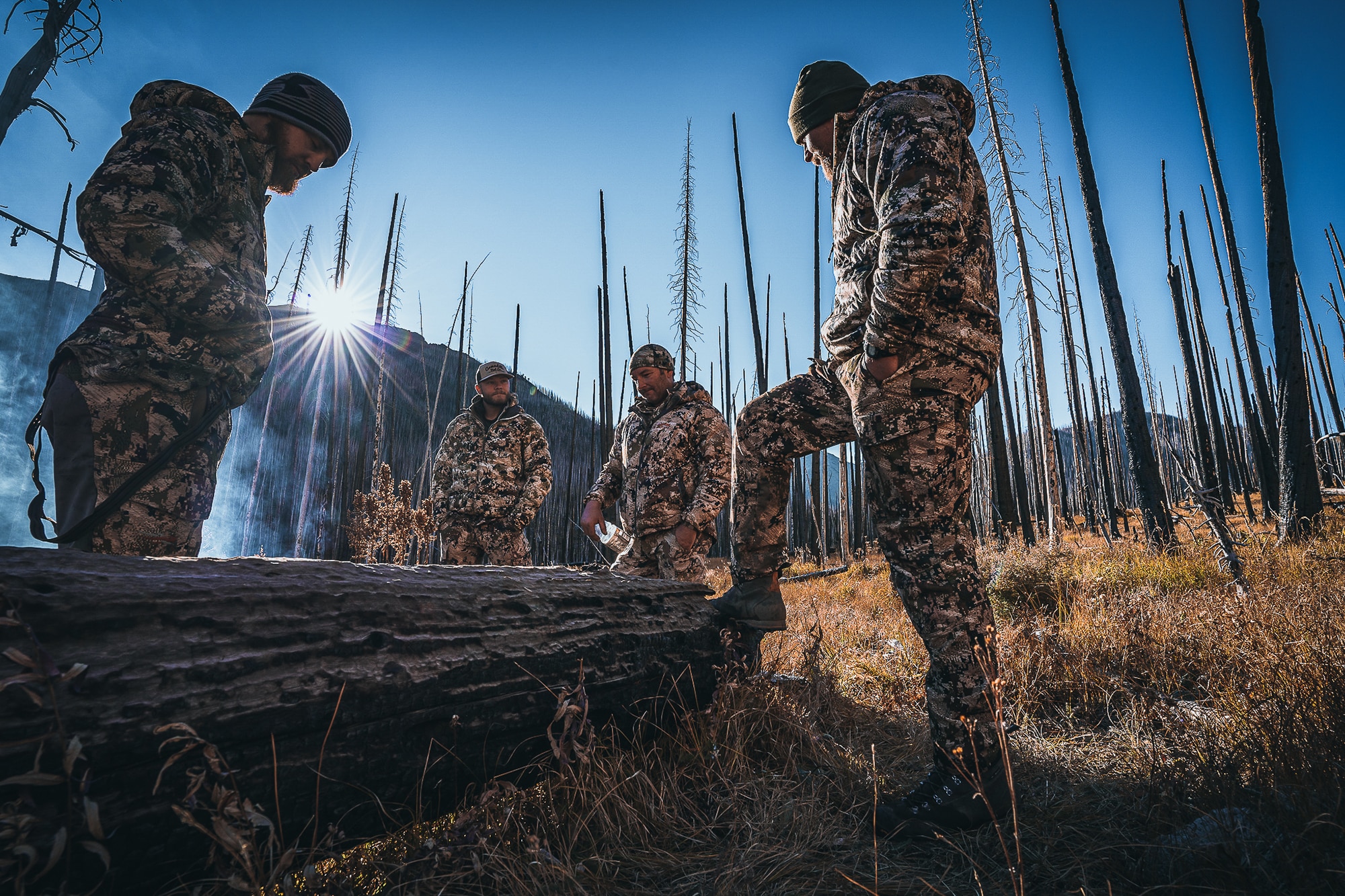
“I’ve literally sent him an IG message about shelters, and he asked for my number and called me instantly while guiding a client on a Texas aoudad hunt to make sure I was making the correct choice for the hunt I was going on,” recalled podcaster Jason Holliday. “No one of his stature in the hunting space would ever return my message that quick, if at all, and they definitely wouldn’t call me.”
My money is on accessibility. Snyder, more than any outdoor industry celebrity I know, makes himself available, takes calls, and answers questions from friends and strangers who track him down online. His phone goes off with well over 200 phone calls, texts, and messages on various social media platforms every single day.
“The outdoor industry has been really good to me,” he said. “I pissed away a ton of money on bad gear from horrible advice in the beginning. So if I can help people save some money or shorten the learning curve by giving out my number and helping out someone over the phone, I’m good with that.”
The first time we hunted together, when we got back to cell service, he showed me his phone. More than 1,000 DMs were in his Instagram inbox. He spent most of the three-hour drive back to civilization answering all the serious questions.
Tines and Text Messages
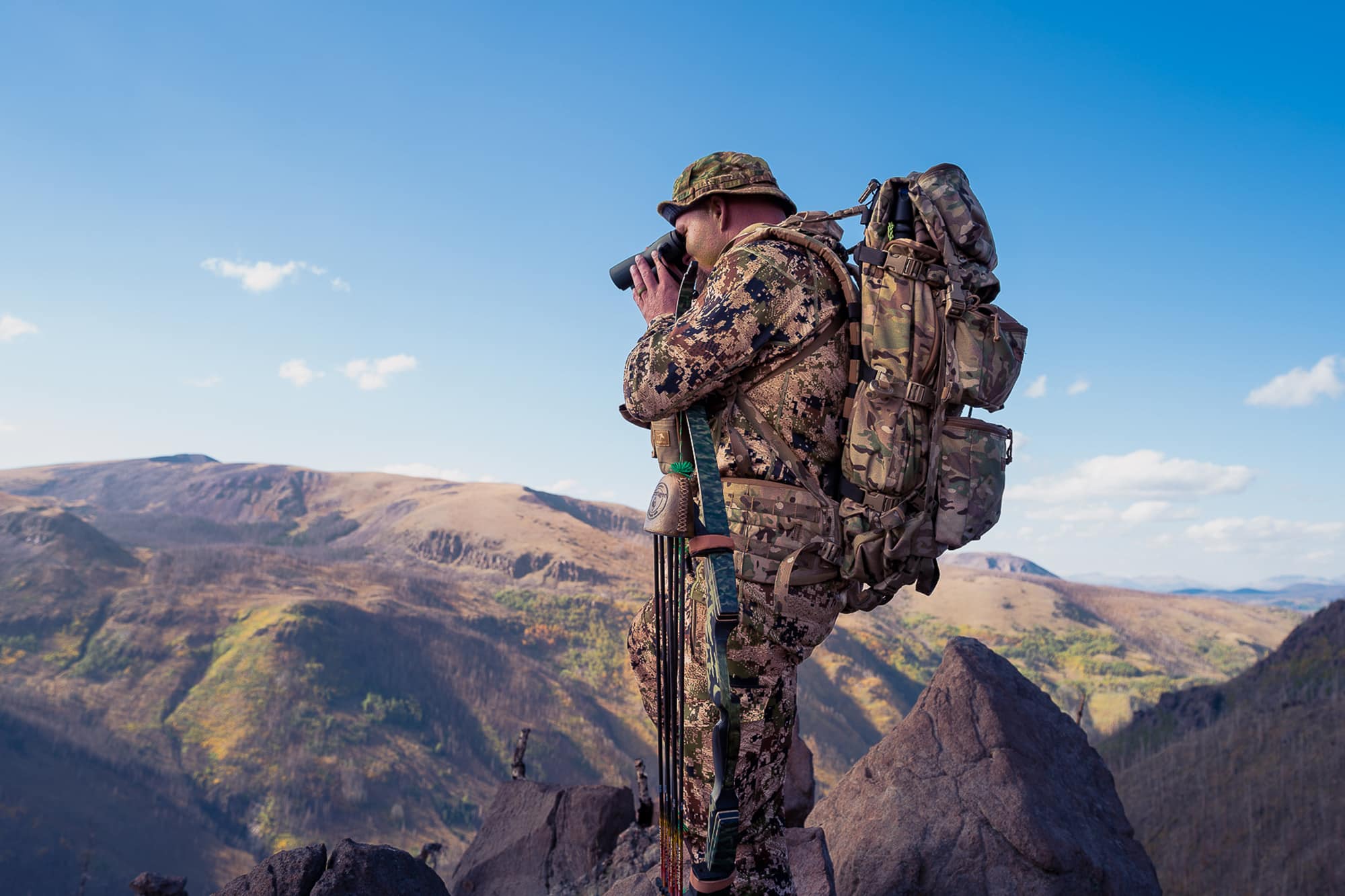
We stay put for the afternoon. Two bedded bulls and a little cell service make it an easy decision. Before settling in for the afternoon, the issue of water comes up. Camping where we are keeps us out of the areas elk like to hang out, but we’re also a long way from water.
I volunteer to make the 600-vertical-foot descent and 300-yard climb down to the creek. Aron insists we play rock paper scissors because his hyper-competitive nature won’t allow him to just let me go grab water — there has to be a competition. I lose, and down the mountain I go. Water full, pack on, a bugle comes from about 300 yards down the drainage.
“Fuck me!” I say to myself as I run to the closest trees 150 yards up the open hillside. I make it to cover just in time and listen and catch my breath as the elk moves past me, continuing up the drainage. I complete the last miserable 150 yards of the climb, then tell Aron what happened and where the elk are going. “You could have shot that bull if you were down there filling up water,” I say.
“That’s what I get for being lazy,” Aron replies.
Aron straps his bugle tube in his belt and starts his descent into the drainage to try to get on that bull and call him in. I’m still recovering from my water-laden hill sprint, and stay put. An hour passes, and Aron returns. “That bull was on a mission to get up the hill and get to bed,” he says as we settle in for the remainder of the afternoon. “I’ve heard these elk fire off around as early as 2:30 out here before.” His phone rings, but he doesn’t answer it. A text message dings in. It’s a guy with a question on a pack. Elk bedded around us everywhere, and Aron gets typing, answering this dude’s questions in a rapid-fire conversation.
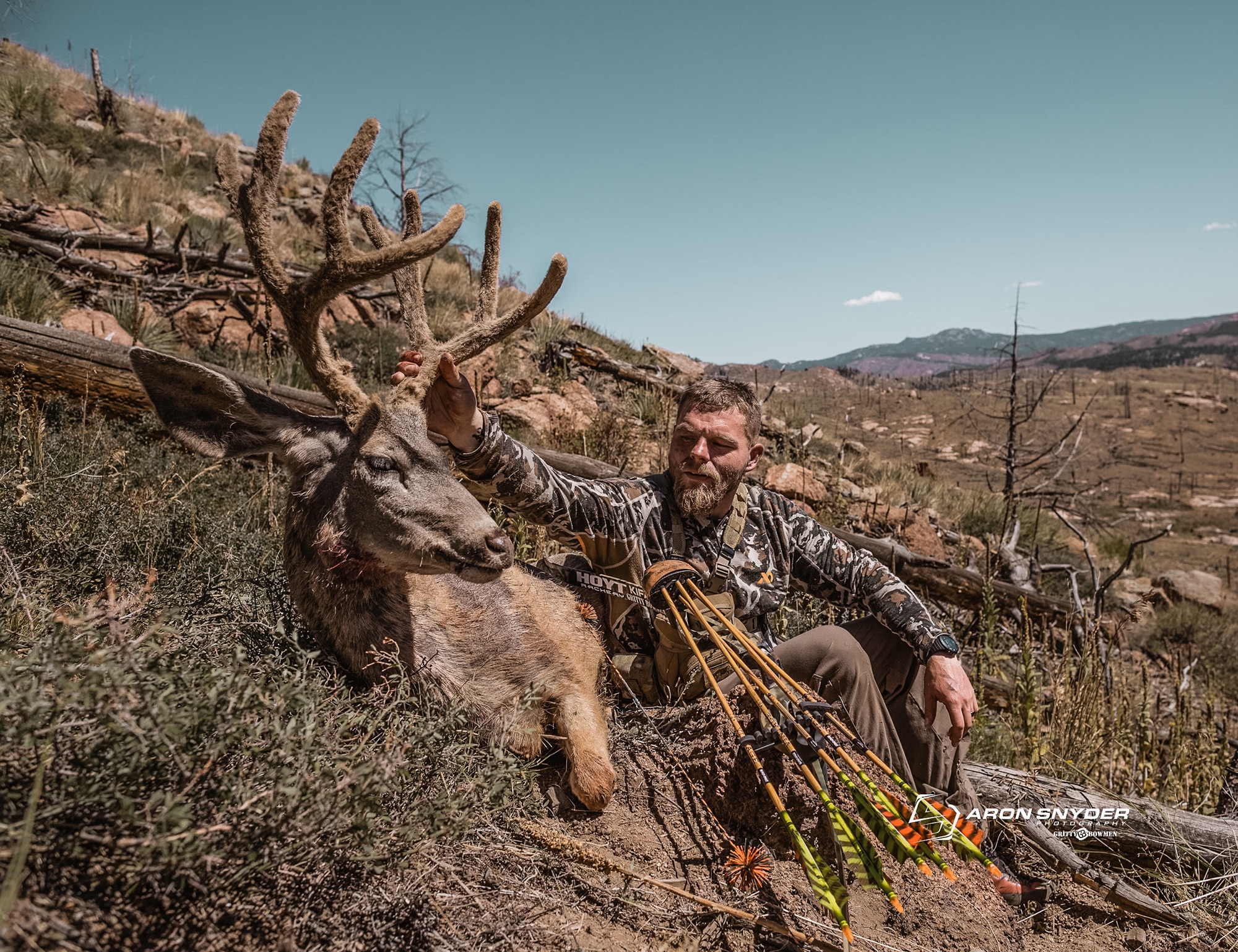
Shortly after 2:45 p.m., a bull breaks his silence from his bed. I bugle back, hoping to keep him talking so we can gain a better understanding of his location, but we get no response. We remain in place, waiting for them to start talking and moving. Thirty minutes later, we hear a bugle and another bull responds.
The bull we dubbed the growler was up high above the honey hole but sounded like he was coming down, presumably to one of two wallows that had water pooled in them in this unusually dry season. We approach the honey hole from the north. Hurrying in hopes of getting in below the growler to make him more susceptible to calling. We move in, set up, and start calling, a distinct guttural bugle comes from below us — how the hell did he get all the way down there, I wonder.
Soon I hear cows responding to my bugles, pacing back and forth at the transition between the aspens and conifer forest. This is exactly what we need. Call his cows away, so he comes to round them up, I think, as I keep calling to the cows to keep them on the edge between us.
The growler stays put 75 yards below Aron’s position. We can see him through the aspens. And he’s BIG. Two raghorns come screaming in front of Aron, but he resists the urge to shoot. The growler doesn’t move. As quickly as the excitement started, it ends with this herd bull losing interest and pushing his cows away. We decide to work our way to camp and try to get back on them in the morning. That evening in camp, we listen to elk bugle from our tents as they moved all around the hill we were camped on.
The Growler

This season has been one of the driest in recent years. Colorado has seen record wildfires. Even with two September snowstorms, there just isn’t enough moisture on the ground. Most of the alpine grasses are dry and withered, pushing the elk into the timber earlier than usual. I didn’t so much as hear a bugle for the first two weeks of archery season. “Cold calling is the only thing that has been working for me, but we’re only getting cows and rags to come in,” Aron says on that last morning.
Since we heard bulls bugling in the vicinity of camp before drifting to sleep, we let one rip before stepping off into the pre-dawn dark. Silence. We work our way down the mountain toward where we had all the action the day prior, this time pushing farther down the mountain in hopes of being below the old growler. We walk a few hundred yards, bugle, walk a few hundred, and bugle until we get a response. Then, a few minutes in, a deep, dark, guttural bugle echoes back.
“It’s him!” I say. I can barely contain myself. “He’s STILL below us! What the fuck?! Fuck. Fuck. Fuck.”
“Take a breath,” Aron says, and we wade into the darkness.
We try to hastily move down to get on the same elevation as the bull to prevent the downward morning thermals from giving us away. As we make our move, the growler bugles again.
“He sounds pissed,” Aron says.
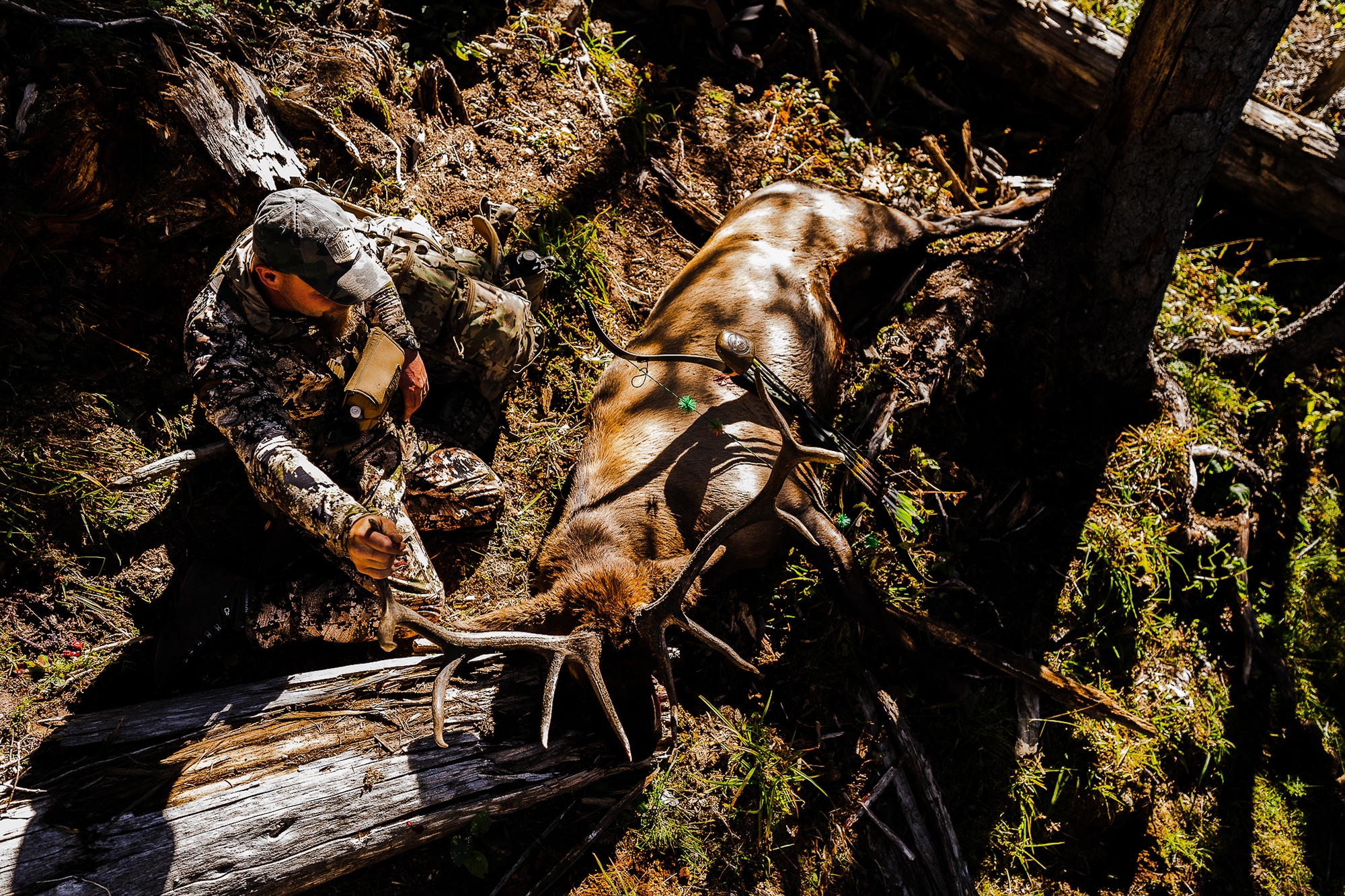
The growler bugles again, and again, and a third time. Hair stands up on my neck, and goosebumps run down my arm.
“He’s fucking close,” I whisper.
For the first time in four encounters, he’s coming uphill and toward us. With little time to react, he surely caught our scent, moving downhill with the falling thermals.
We wait in place. The minutes turn to hours. Winded. The growler winded us again.
Aron’s friend Cody Covey was hiking into camp that afternoon, so we headed back to the tents to wait for him. Cody arrived sometime after 3 p.m., set up his tent, and readied for the evening hunt.
It was decided that Aron would work down to an area south of camp where he had been into elk two weeks before. Cody and I headed north to where all the action had been the past few days. “I’m the Rag Reaper,” Cody proclaims. “If a legal bull comes in, it’s dying.”

We pound fists and head our separate ways. Cody and I head north from camp toward the honey hole. We get there and set up to do some cold calling near a wallow. Cody is set up in the trees about 20 yards away from the wallow, and I’m about 50 yards behind him.
We cow call and bugle back and forth for about 30 minutes until I hear a faint bugle from above me. The bull comes to within 300 yards and remains above us. We try to move toward him, but our every move is countered by the bull moving away and farther up the mountain. Toward the top of the mountain where we have cell service, I get a text from Snyder.
“Text me when you’re heading toward camp. I’ll be there in a few and get dinner going.”
We try to call the bull one last time, but he is still moving up and away, so we start our hike back to camp. We arrive at camp to a meal prepared by Snyder.

“Good hunting partners are hard to find,” Cody later tells me. “Aron isn’t just a good hunter, he’s also a good hunting partner. He cares about your success as much as his own, and if there’s something he can do to make the hunt or trip better, that’s what he does.”
On my final morning with this crew, we head north toward the honey hole one last time. When we reach the wallow, we set up for more cold calling in a triangle. Aron is 80 yards below the wallow. Cody is 50 yards above, and I stay about 30 yards behind it. After 10 minutes, I hear large hoof steps coming down the mountain toward Cody. Ten minutes after that, nothing. “A spike came in,” Cody says as we regroup. Not a raghorn. Not a legal bull.
Aron and Cody decide to push beyond the honey hole across the drainage to a new ridge to see if that’s where the elk went. For me, it was time to hike back to camp, pack my gear, hike out to my truck, and start the 19-hour drive home. We bump fists and go our separate ways.

Aron Snyder hunted every day left in that September. He had opportunities, but none at the 300-inch bull he was after. In the words of the great mule deer killer Robby Denning, “If you want to kill big animals, you gotta be okay with eating tag soup now and then.”
When it comes to hunting, especially on public land, especially with a recurve, setting a goal like Snyder’s doesn’t come easy. Snyder could have killed multiple bulls and countless cows over the course of the season, but none met his goal, and he didn’t waver. A big part of him didn’t care. September, even with tag soup, was its own kind of success. He spent more nights sleeping on a mountain than he did in a bed.
READ NEXT – Kifaru’s Aron Snyder on Compound Bow Versus Stick Bow


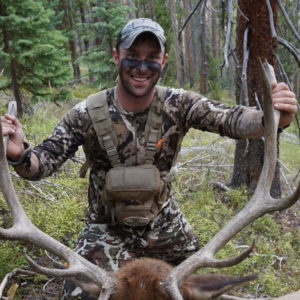





Comments